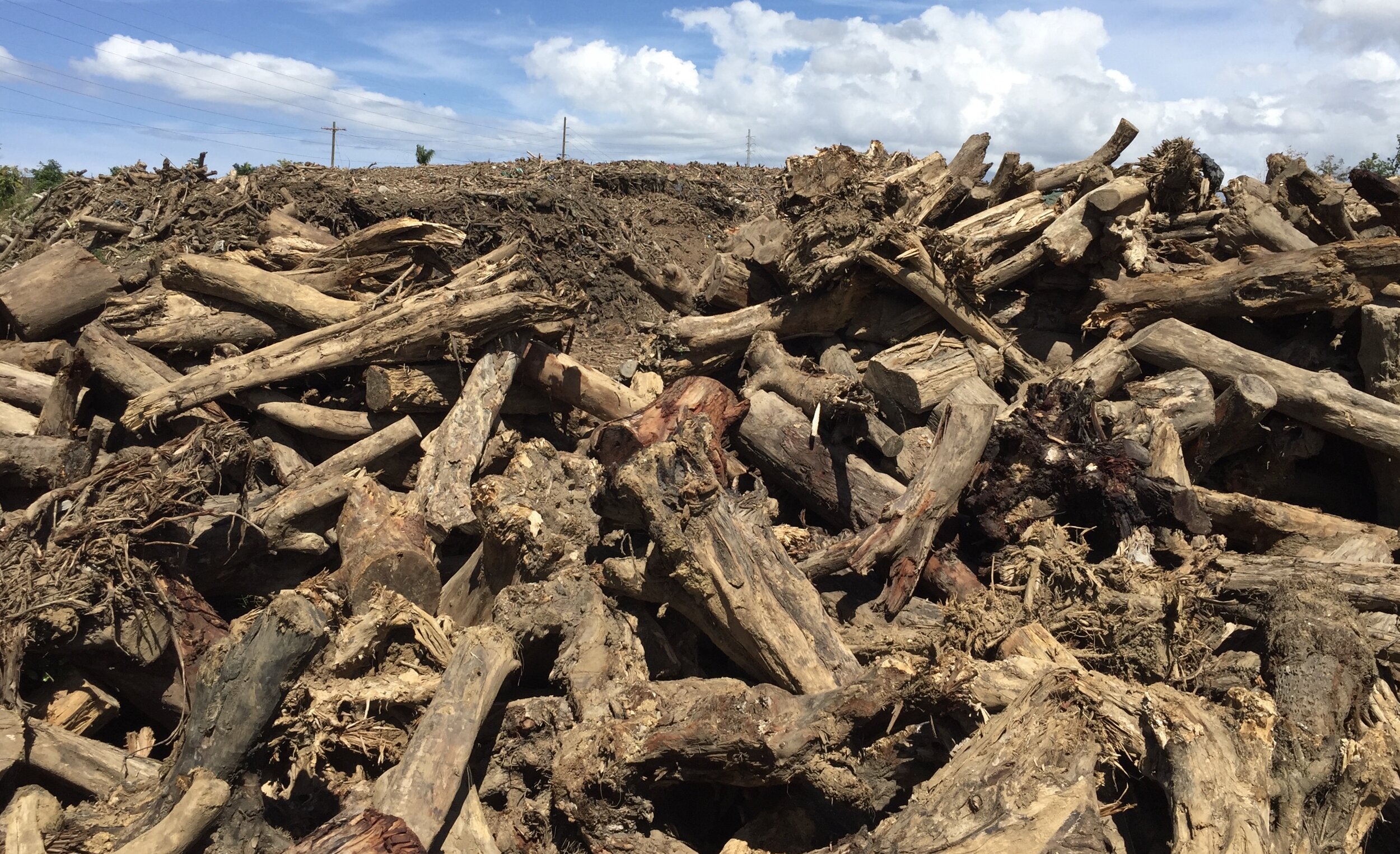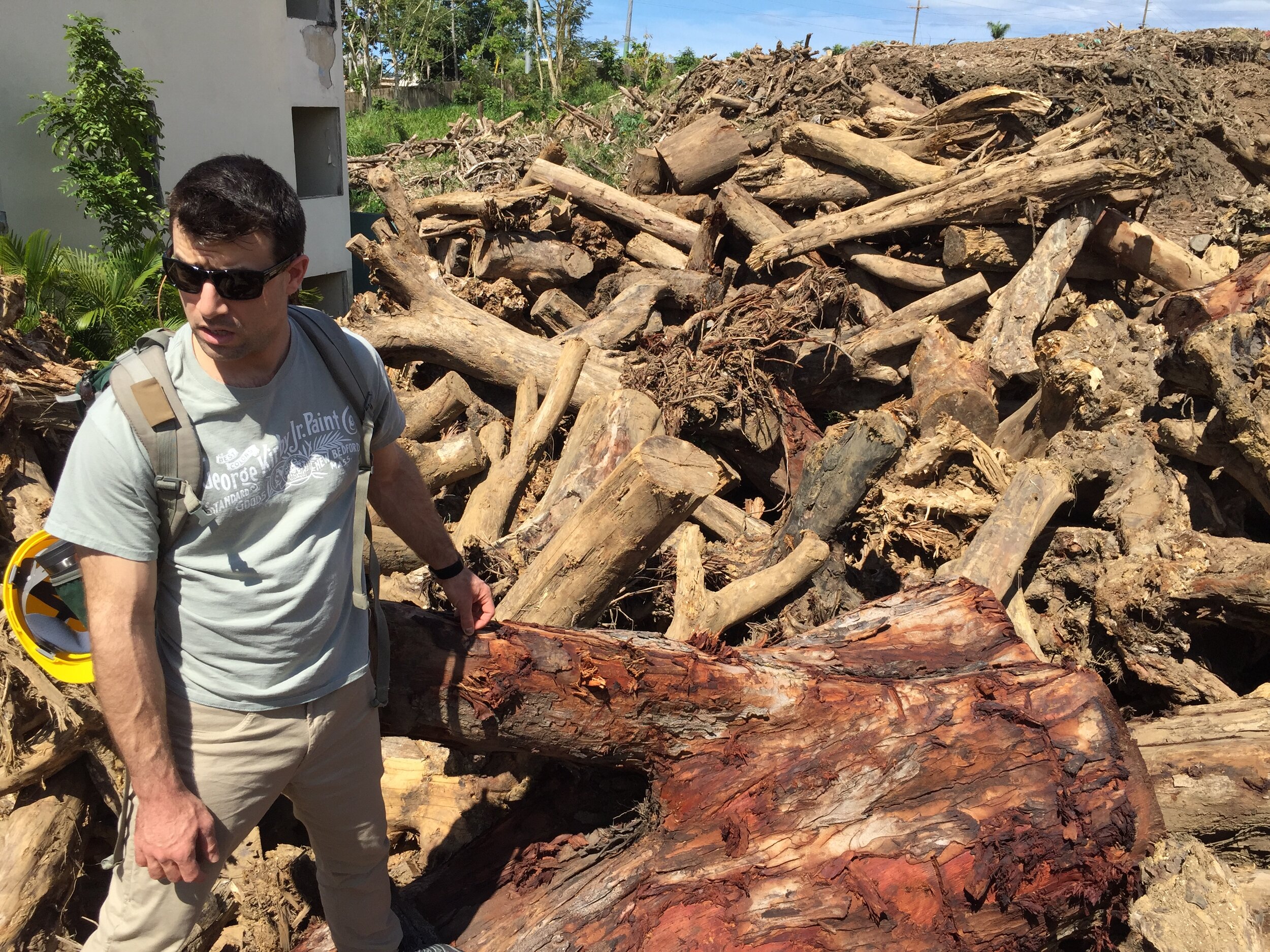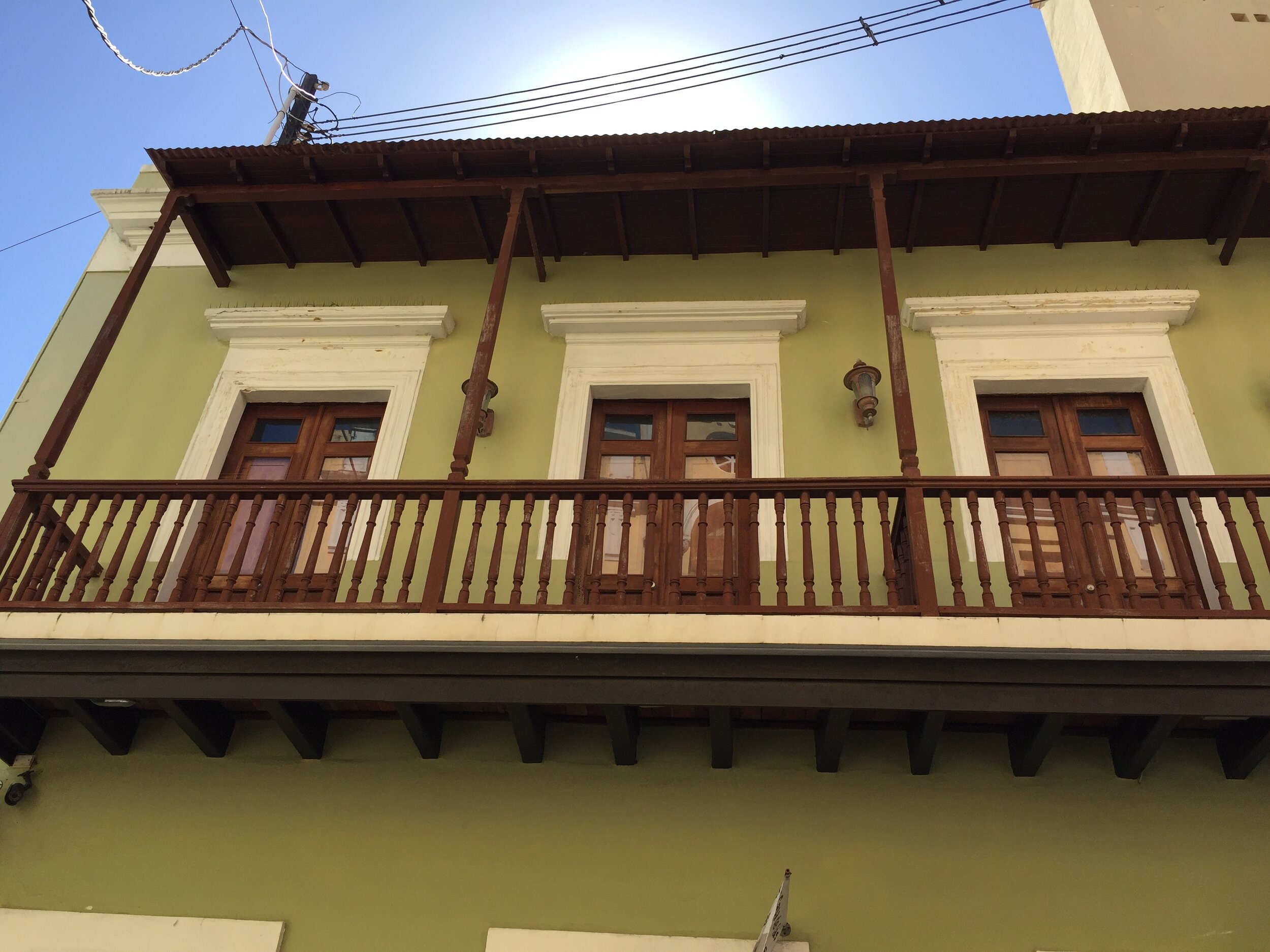Puerto Rico: Building Capacity and Resilience
GreenWood landed in Puerto Rico in April 2018, six months after hurricanes María and Irma deposited some 4 to 6 million cubic yards of “vegetative debris” across the island. The US Army Corps of Engineers was still actively clearing salvaged timber from roads and right-of-ways and collecting the refuse in mind-boggling deposits. This roughly translates into 1 to 2 billion board feet of wood. If an accurate inventory had been possible, it would have included an untold volume of Caribbean and Bigleaf mahogany (Swietenia spp.), along with more exotic hardwoods like Blue Mahoe (Talipariti elatum) and Ausubo or Bulletwood (Manilkara bidentata), a rot-resistant species that’s highly prized for constructing the distinctive exposed balconies of Old San Juan.
Forests in Puerto Rico: By the Numbers
| 4% | When Puerto Rico became a US colony in 1898, the island was estimated to have about 4 percent forest cover, having been cleared for agriculture during the preceding four centuries of Spanish occupation. |
| 60% | A hundred years later, following a major migration to the cities and an aggressive tree-planting campaign led by the US Forest Service, the island is now estimated to be more than 60 percent forested, greatly accelerating a process of reforestation that took New England several centuries. |
| 95% | Despite this transformation, Puerto Rico currently imports roughly 95 percent of all of its wood and agricultural products from off island. |
Much of this salvaged timber is already gone, having been chipped or composted, with only a small volume of logs salvaged for their income-generating potential. This reality and these dramatic numbers have a lot to say about the crisis, the needs and opportunities facing Puerto Rico in responding to climate change and the increasingly extreme weather events that have become the “new normal” throughout the Caribbean.
A portable sawmill at the University of Puerto Rico, site of a GreenWood sawmilling workshop
The core of this story is about building capacity and resilience. As the agricultural landscape and the economy were transformed over the last 120 years, the growing tree stock was too young to generate a timber harvest of any scale. By the time the hurricanes arrived many of these trees were beginning to reach harvestable dimensions, but there was virtually no local capacity to process or extract value from the gargantuan piles of downed timber. A handful of entrepreneurial island woodworkers, landowners and small businesses recognized this gap and initiated a small “gold-rush” in portable sawmill purchases. They shared a vision of creating a dispersed “artisanal” timber industry, unlike the vastly larger and more centralized industry that we typically associate with timber harvesting in North America.
GreenWood also recognized an opportunity to bridge voids in timber processing with technical training, appropriate technology and market development—the key components of our program. As with the more recent climate crisis facing Honduras, we were determined to focus our response in Puerto Rico on helping local partners build their productive capacity, with two objectives in mind:
- Improve the quality and value of harvested timber through sawmilling and wood-processing experience.
- Strengthen the connection between two of Puerto Rico’s most valuable assets—its rich and diverse tropical forest and its community of skilled woodworkers.
We also aim to strengthen public understanding that a well-managed forest can be harvested in perpetuity, providing both critical environmental values as well as immediate and long-term economic and cultural benefits. To that end, we conducted sawmilling workshops in collaboration with our local sponsors and colleagues at the USDA Caribbean Climate Hub. These are featured in the video shown here, which documented a GreenWood “best practices” workshop held at the University of Puerto Rico Experimental Agricultural Station in Corozal last February.
We have also developed a unique Artisan EcoTour program designed to benefit island artisans, the local economy and help educate the public—on and off the island—about Puerto Rico’s valuable natural and human assets and the challenges they both face. ▪︎
Examining a pile of downed timber in Puerto Rico





